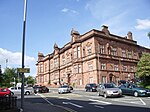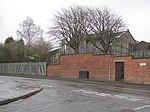Summerlee, Museum of Scottish Industrial Life

Summerlee Museum of Scottish Industrial Life, is a free entry industrial & social history museum in Coatbridge, North Lanarkshire, Scotland. It is situated on the site of the Victorian Summerlee Iron Works and the former Hydrocon Crane factory. The main Hydrocon factory building became the museum’s exhibition hall but it has been substantially changed and adapted since. The museum aims to show Lanarkshire's contribution to engineering, mining, steel working, weaving and farming, and also show the lives of the people of the area. It includes interactive displays and a temporary exhibition space. The museum also incorporates several railway steam locomotives, preserved carriages from a 1960s era Glasgow Class 311 and has a short working heritage tram line. The museum covers 22 acres and includes two Scheduled Monuments, Summerlee Iron Works and the Monkland Canal, a large play area, mine and miners' row, outdoor exhibits, a cafe, changing place, gift shop and sweet shop.
Excerpt from the Wikipedia article Summerlee, Museum of Scottish Industrial Life (License: CC BY-SA 3.0, Authors, Images).Summerlee, Museum of Scottish Industrial Life
Gartsherrie Road,
Geographical coordinates (GPS) Address Nearby Places Show on map
Geographical coordinates (GPS)
| Latitude | Longitude |
|---|---|
| N 55.866388888889 ° | E -4.0308333333333 ° |
Address
Sensory Garden
Gartsherrie Road
ML5 2DJ , Gartsherrie
Scotland, United Kingdom
Open on Google Maps









